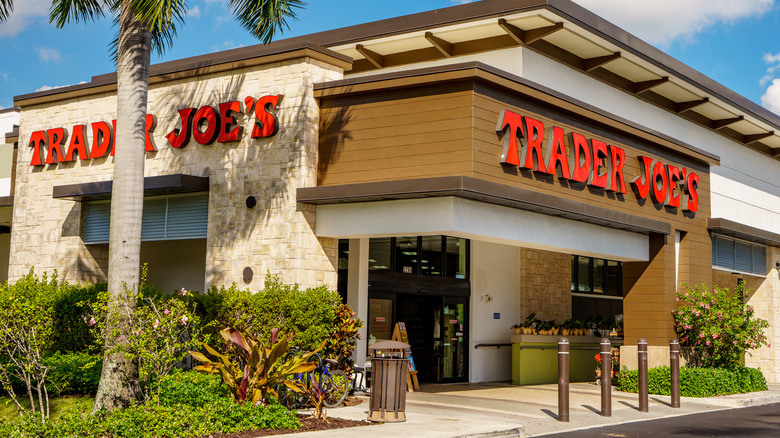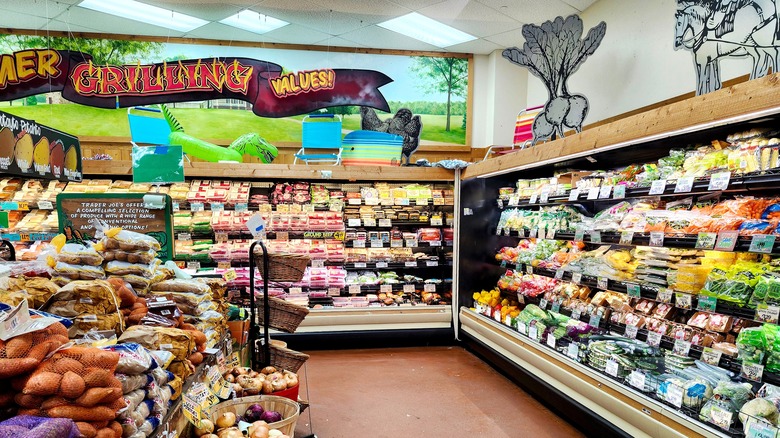The Japanese Principle That All Trader Joe's Employees Must Follow
Frequent Trader Joe's shoppers often note an inspiring ambiance in the chain's roughly 600 store locations across the United States. There's a lot to fuel that feel-good aura, including artsy displays, interesting products, and competitive pricing. But there's a lesser known element in the TJ's formula, one that directly informs positive employee practices and attitudes, without which a fan-fave chain like Trader Joe's would take a big hit.
That impactful component in Trader Joe's business approach is a Japanese principle known as kaizen. It's far from a new-fangled idea, dating back decades in corporate applications, specifically with mega-entities such as Toyota Motor Corporation. It became a core part of the Trader Joe's philosophy in 2007, as the company implemented new expansion plans under the direction of former CEO Dan Bane. It explains kaizen as a philosophy of continuous improvement, facilitating change and developments for optimal results. For Trader Joe's, it's a way to ensure each of the stores and every product it carries is the best it can possibly be.
The philosophy can be applied to a specific product or to overall store and employee practices and methods. For example, Trader Joe's describes its newest waffle weave cotton kitchen towels as an opportunity to "kaizen" the existing ones; in other words, progressively improve them. When it comes to incorporating the kaizen philosophy across broader business models, the concepts deepen.
Kaizen principles for employee empowerment
Toyota is considered a leading early adapter of the kaizen business philosophy, but it's certainly not alone. In addition to Trader Joe's, other well-known companies embracing kaizen include automobile maker Honda, as well as Canon, Sony, and Panasonic — all Japanese corporations. There are plenty of likeminded U.S. companies as well, reportedly including food giants such as McDonald's and Starbucks, who has used kaizen to elevate efficiency.
In addition to embracing betterment, kaizen digs deeper into how it's accomplished. Employees across the entire organization must never settle for existing conditions, instead being willing to push boundaries while working together as a group. It requires an ongoing mindset of improvement, persistence, personal discipline, creativity, and incremental change, whether big or small. The concept works best when employees accomplish tasks and then circulate into other areas, constantly learning, sharing, self-reflecting, and building upon successes.
Many companies, such as Nestlé, one of the biggest food conglomerates in the world, use kaizen to focus on efficiency and waste reduction. There's an empowerment mindset in which every member of the team contributes to problem-solving and improvements. Solutions don't have to be perfect, just simple and acted upon. Though nowhere near the mega-corporate structure of Nestlé, the kaizen application at Trader Joe's is more evident to everyday shoppers who breeze through colorful, well-structured, sometimes quirky aisles on a weekly basis. As for employee empowerment and coordination, just listen for the clanging brass bells ringing out maritime communication codes.

